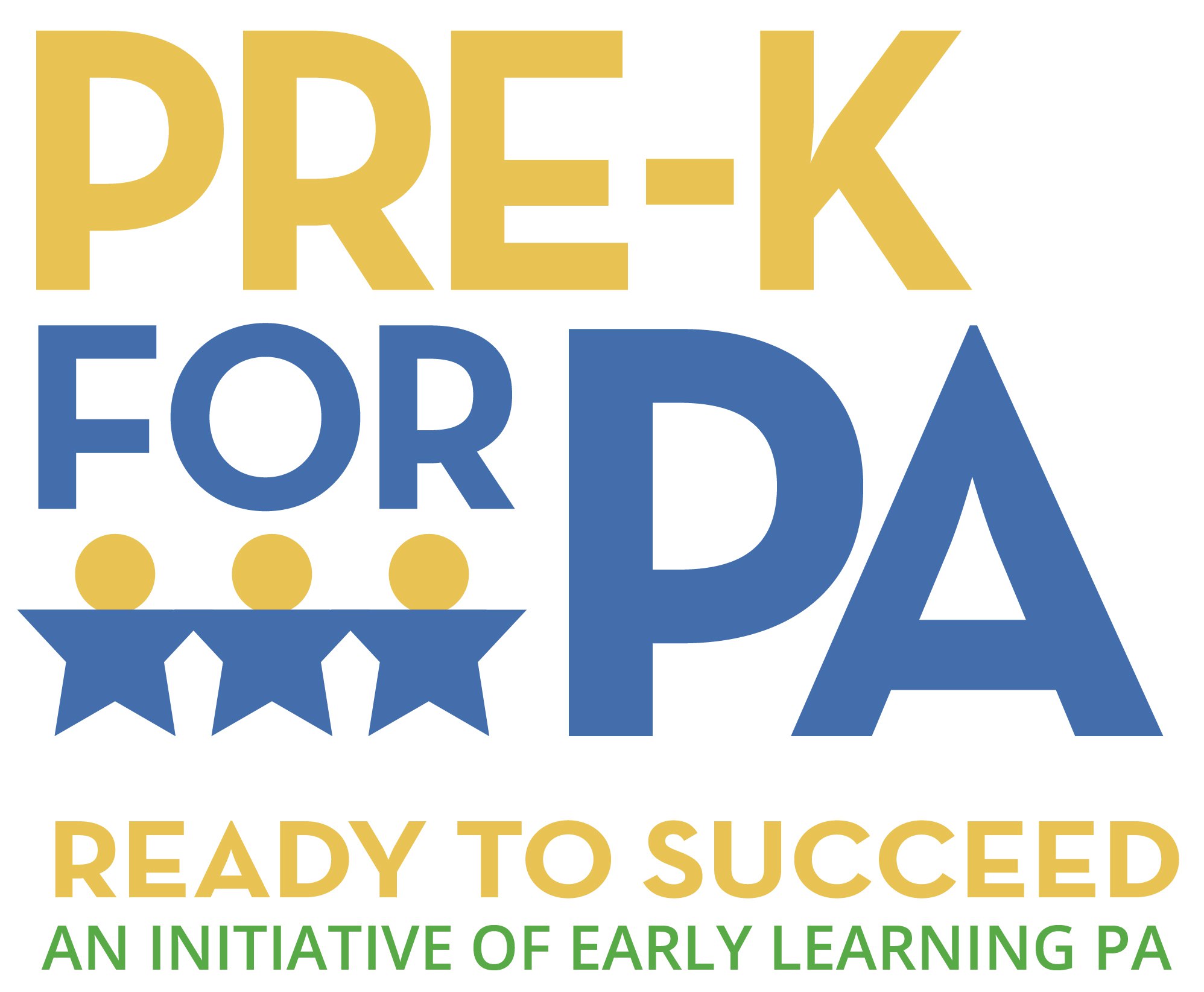
Patriot News: As We See It – When They Talk Budget, Wolf and Lawmakers Can’t Forget Early Childhood Education
By The Members of Pre-K for Pa.
The sharp elbows of politics can sometimes be bruising, however unintentional the bump. As Pennsylvania’s budget impasse stretches into its third month, across the commonwealth the impact of political gridlock is beginning to be felt.
As PennLive’s Jan Murphy notes in “Cash flow woes: Schools feeling the pinch of the Pa. budget impasse” (PennLive, Aug. 31), small business owners and non-profits who operate high-quality Pre-K Counts and Head Start classrooms across the commonwealth are being forced to make a hard decision.
And that’s this: Either take out loans (and pay the interest) to open their doors to eager young learners or close state-funded classrooms
We urge Gov. Tom Wolf and the Legislature to work together to craft a budget that resolves this hardship.
But their negotiations regarding pre-kindergarten funding can’t only be about preserving state funding levels from last fiscal year for pre-k and getting those grants out the door.
Each year, more than 200,000 3- and 4-year-olds in Pennsylvania are missing out on this once-in-a-lifetime learning opportunity.
These kids don’t get a “do-over” if they miss out on high-quality pre-k. For them, this negotiation must also be about increased funding.
That is why we, the 10 founding partners of Pre-K for PA, a statewide campaign to expand access to high-quality early learning, are cautiously optimistic that the eventual outcome of budget negotiations will favor our youngest learners.
Pre-K for PA’s vision is that every at-risk 3- and 4-year-old will gain access to high-quality pre-k by 2019.
In order to achieve that widely supported goal, the final 2015-16 budget must provide a substantial increase in state funding for pre-k.
It will take about $400 million in additional state investments over the next four years to increase access to children at greatest risk of academic failure.
The budget passed by the House and Senate, which included a $30 million increase, is a good first step to providing high-quality pre-k to an additional 3,500 children, but a $120 million increase this year would serve an additional 14,000 children and put us closer to our Pre-K for PA goal.
High-quality pre-k is a critical investment in the future of our children. Higher graduation rates, lower criminal activity, greater lifetime earnings and lower rates of special education are all connected by research to be outcomes of attending quality pre-k programs.
Read the full article here.

LancasterOnline: Editorial: No Budget Should Mean No Labor Day Holiday for Top Pennsylvania Leaders
THE ISSUE
The state budget is now 65 days late. Pennsylvania Auditor General Eugene DePasquale says he will keep track of the effects of Harrisburg’s tardiness in upcoming audits — costs such as interest expenses and penalties for late payments to a school district’s vendors. DePasquale says he plans to release the numbers on those costs as he completes 50 audits this fall and eventually expects to compile a total from all districts.
Sure, it’s not easy to come up with a state budget.
And sure, we know it’s even harder when that budget must be agreeable to Republican majorities in both houses of the General Assembly that oppose tax increases and to Gov. Tom Wolf, a Democrat who promised voters that he would add an extraction tax on natural gas and increase education spending.
But does it really need to be this difficult?
At a news conference Tuesday in the Capitol, Auditor General DePasquale said he thinks agreeing on education spending, pension reform and how to handle Pennsylvania’s state-owned liquor sales should not take long.
“I think if everyone locked themselves in the Governor’s Residence for a weekend, and were willing to come up with a deal on those three things, they could do it within a weekend,” the auditor general said.
Perfect timing. Labor Day is a long weekend. It’s time to get this done.
Lawmakers and the governor should find a compromise that will reduce the state’s pension costs (now $53 billion in the red), sell off the state liquor stores, charge drillers for the gas they take from the Marcellus Shale and, most importantly, boost state funding of public education.
Granted, Pennsylvanians have endured long budget stalemates before: Gov. Ed Rendell signed the 2009-10 budget in October and the 2003-04 budget in December.
But, with the percentage of state funding comparatively low (45th among the 50 states and Washington, D.C.) and declining in Pennsylvania, this problem grows worse for school districts that depend more on the state than local taxpayers.
Critics will counter that Pennsylvania ranks seventh or eighth in per-pupil spending (depending on the source cited) but this avoids the issue of equity. Wolf also campaigned on a promise to reduce the difference in school funding based on a child’s ZIP code.
Given calls to spend smarter, not more — on everything including public education — it would be a shame if the stalemate were to force any Pennsylvania school district to spend money on late penalties and interest.
The pinch of the stalemate is greater on School District of Lancaster and Columbia Borough School District because larger shares of their budgets, 45 percent and 48 percent, respectively, come from the state. But, at some point, all school districts will be affected.
And K-12 education is not alone in feeling the effects.
The co-owner and five employees at Little People Day Care in Columbia have taken pay cuts because the state has not paid the nearly $30,000 it owes over two months for 20 children enrolled at the school through Pennsylvania’s Pre-K Counts program.
Co-owner Syamal Bhattacharya said he has taken no salary and his employees agreed to pay cuts of 10 percent or 15 percent each. Next week, Bhattacharya said, he has a meeting at the bank to talk about a loan.
Bhattacharya hopes to get his employees back up to full pay, and thinks he can, if the state starts paying its bills by the end of this year.
Read the full editorial here.

Pottstown Mercury: Editorial: State Budget Impasse Hurts Poor Schools Most
Two months past the deadline for a state budget, and little has changed since the July 1 start of a new fiscal year. Gov. Tom Wolf and the Legislature are no closer to resolution than they were at the start of summer.
What has changed is that children are heading back to school with no money from the state to support education.
In most districts, the shortfall isn’t missed in August because property tax payments are coming in, insuring good cash flow in school districts even without state subsidies. But that scenario of relying solely on local tax income emphasizes the inequities in Pennsylvania public education.
“The state’s delay in passing a budget only aggravates the current education inequities in Pennsylvania.” said Charlie Lyons, spokesman for the Campaign for Fair Education Funding in a press release. “It is the students with the greatest needs that are most affected by the failure to pass a budget, since the schools facing the most challenges rely more on state dollars and have fewer local revenues to fill the gaps.”
A recent survey conducted by the PA Association of School Business Officials (PASBO) showed that a majority of survey respondents — 83 percent — are using fund balances to cover the lack of state subsidy payments, while half of survey respondents said they have borrowed or are considering borrowing to avoid any cash flow difficulties, the coalition of school equity reform organizations noted.
And at a press conference last Friday in Upper Providence, area school officials joined child care and Pre-K education providers to plead for an end to the impasse, saying that without state funding, their classrooms are in jeopardy of closing.
“We have this beautiful new classroom to educate our children, but without additional state funding, it will sit empty,” said Melanie Godhania, program director for Play and Learn, which hosted the press conference.
“Pre-K counts is just as important as public education,” said Spring-Ford Area School District Superintendent David Goodin. He noted that while many view Spring-Ford as an affluent school district, there are 313 children who quality for Pre-K Counts, which relies on state funding.
“We can’t wait much longer,” said Erinn Rinn, community relations director for Today’s Child Learning Center, which, with 15 centers across Delaware County, is Delaware County’s largest early child care provider.
Rinn’s organization had to take out a $138,000 bridge loan to keep the centers operating while the budget impasse drags on in Harrisburg. “But bridge financing will run out in October. In a real sense, the clock is ticking.”
The last time a budget impasse created a cash flow problem, the delay of opening school meant families who counted on the child care centers lost their jobs to stay home with their children, said Christine Fox of Warwick Child Care Centers in Chester County.
Like the delay in subsidies to public schools, the lack of state funding for Pre-K programs affects poor districts most.
Read the full article here.

Scranton Times-Tribune: Editorial: Clock Ticks on Education Legislators Don’t Miss a Payday
State leaders have spent the summer posturing about the state budget rather than adopting it. They have the luxury to do so. Even though there is no law establishing tax rates, taxes continue to be collected. Everyone in state government has been paid over the six weeks that the commonwealth has operated without a budget.
When the budget finally is passed, in effect it will be retroactive to July 1, the beginning of the fiscal year.
But for some citizens of Pennsylvania, the clock can’t be turned back. Young children cannot regain learning opportunities that are lost due to the failure of adult politicians to adopt a budget on time.
Even with a budget in force, only one in six Pennsylvania 3- and 4-year-olds has access to preschool. Republican lawmakers and Gov. Tom Wolf have proposed funding increases to make preschool somewhat more available, but even those marginal improvements can’t occur without a budget, and the opportunity could be lost forever to kids who are eligible now.
Mr. Wolf’s proposed budget includes $120 million in increases for pre-K access. Pre-K PA, which advocates early-learning programs, estimated that $400 million is needed over the next four years just to provide pre-kindergarten for children most at risk of academic failure. The Republican budget has countered with a $30 million increase.
Read the full editorial here.

Lancaster Online Op-ed: Businesses: Invest in Preschool Education
JENNIFER HENRY | Special to LNP
Congratulations to our youngest graduates, those just out of preschool.
Local families will proudly cherish photos of their preschoolers wearing miniature mortarboards and clutching colorful diplomas this graduation season.
But do we fully understand the meaning of this occasion and its impact on these children and their eventual place in society?
A child’s success in school, and ultimately in life, is tied to this event marking the passing of a child’s first five years spent, at least partly, in an early learning program. As research over the past 20 years is proving, there is an awful lot to celebrate.
Children who have access to high- quality care and learning in their first five years are:
— More likely to enter kindergarten prepared to learn and, according to a 2007 report for the Louisiana Department of Education, less likely by half to need special, costly interventions and supports.
— More likely to graduate from high school and less likely to be incarcerated.
— More likely to enter higher wage-earning fields and less likely to rely on public subsidies as adults, according to Stanford University economist Eric Hanushek.
— More likely to enroll in college and better prepared to enter military service, according to the organization Mission: Readiness.
Further economic studies help us understand the benefits of high-quality early learning in terms of return on investment. For every dollar invested in early learning, there is an immediate return in terms of job creation, availability of employees in the job market, and increased revenues realized through purchase of services and goods in communities.
Over the long term, Pennsylvania Partnerships for Children says, there is an estimated 17 to 1 return in terms of economic benefit from an initial investment in early learning.
And then there is science —biological evidence that brain development is 90 percent complete by age 5. Synapses and neurons are being fed by early-learning investment, too.
The experiences a child has up to this point — at home, in preschool, in child care — shape his trajectory for life. We are creating human capital, and we only get one chance per generation to do it right. There is no rewind button for the first five years.
Read the full article here.

Guest commentary: The Value of Pre-K from a Pediatrician’s View
By Susan Kressly, M.D., FAAP President, Pennsylvania Chapter of the American Academy of Pediatrics
As a Pennsylvania pediatrician for the past 25 years, I’ve seen thousands of children grow up in the commonwealth. And I’ve seen how their well-being can be impacted not only by their health, but also by their opportunities —particularly their opportunities to learn.
One of the most significant periods for a child’s mental, social and emotional growth is before they even enter kindergarten. Research shows a child’s brain is 90 percent developed by age 5, making the early years a crucial time in life, a brief window of opportunity that can provide every child with the foundation for a lifetime of success.
One of the best ways to help these young learners is high-quality pre-kindergarten, which can bring about dramatic gains in academic and social skills in all children, particularly those who might face disadvantages due to circumstances beyond their control. High-quality pre-k programs provide appropriate, interactive, supportive and stimulating environments for these young minds to thrive.
And pre-k has a ripple effect that goes far beyond the early years. Research shows kids who benefit from high-quality pre-k enter school with stronger literacy, language, math and social/emotional skills. They are less likely to need special education services, less likely to repeat grades and more likely to graduate from high school and enroll in college. And over a lifetime, these young learners will see stronger employment opportunities and increased earning potential, and they will be less likely to end up on the wrong side of the law.
All of this adds up to benefits not only for the child, but for all of us. The problem is, not enough children have access to high-quality pre-k.
In Pennsylvania, only about 18.9 percent of our 3- and 4-year-olds (or about 1 in 6) is able to attend publicly funded, high-quality pre-k, according to the statewide, non-partisan Pre-K for PA campaign. In McKean County, that statistic is better at 35 percent — or about 1 in 3 children — but it still means about 650 McKean County 3- and 4-year-olds don’t have access to publicly funded, high-quality pre-k.
A budget proposal currently on the table at the state Capitol would increase the state’s investment in high-quality pre-k by $120 million — less than a half percent of the state’s total proposed budget for the coming fiscal year. This increased investment would make high-quality pre-k available to 14,000 more children across the commonwealth, increasing access from 1 in 6 of our 3- and 4-year-olds to about 1 in 4.
This is a solid first step, but still leaves a large majority of young learners missing out on the lifelong benefits goal of making high-quality pre-k universally accessible.
Why should we make this investment? Because we all benefit from it. An economic analysis by the Pennsylvania Economy League shows every $1 Pennsylvania invests in high-quality pre-k generates $1.79 in immediate new spending. The return on investment is even more impressive in the long term because every dollar invested in pre-k returns up to $17 in savings and benefits to the commonwealth in the form of a reduced reliance on taxpayer-funded social services, reduced crime and incarceration costs and increased earning power in a better-educated, more competitive workforce.
Read the full article here.





